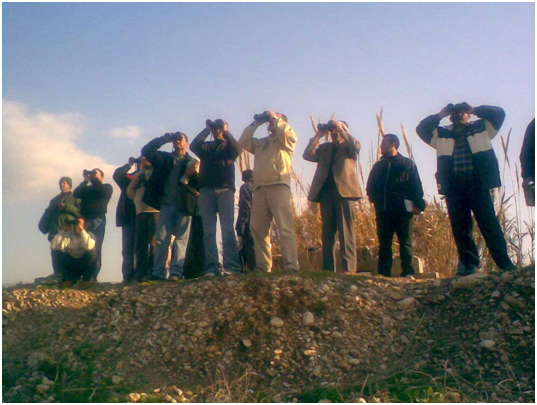
Eleven awards are granted every two years from applicant projects all over the world, which are then exemplified on UN-Habitat’s ‘Best Practice Database’, which contains proven solutions to common social, economic and environmental problems.
Assad Serhal, Director General of SPNL expressed his joy in receiving the award for the Qoleileh Hima project, which is one of the most successful Hima projects carried out by SPNL, entitled ‘The Conservation of the Marine “Hima” in Qoleileh – Reviving Yesterday’s Community Based Conservation Approach for the Sustainability of Tomorrow’s Generations.’
Carried out in collaboration with the municipality of Qolieleh, the Site Support Group-SSG, Swiss Agency for Development & Cooperation (SDC), the German non-governmental organization EURONATUR, ATW-WWF, Care International, and Jensen/BirdLife International, the project preserves the southern Lebanese coast and its resources whilst empowering local people. As well as attracting different species of marine bird, the project aimed to benefit local fishermen by creating job opportunities, such as marine guides, and training them on sustainable fishing methods; and promoted eco-tourism in the area.
The project also involved the neighbouring village communities (in the area stretching from the south of Tyre Coast Nature Reserve to Naqoura) in protecting the coast, birds and marine life. By raising awareness and support for nature conservation amongst local people, this will also promote sustainable living, improve daily income and enhance the respect they have for their local biodiversity.
Since 2004, SPNL has been reviving the ancient traditional practice of Hima, and more recently with funding from Her Highness Sheikha Jawaher Bint Hamad Bin Suhaim Al Thani (Hima Fund). Originating from the Arabian Peninsula and written into Islamic Law, Hima is a protected area system that realises the importance of community involvement when preserving natural areas and managing natural resources. Adopted in many Arab countries and supported by BirdLife International, the Hima approach is being used to conserve Important Bird Areas with the help of local municipalities.
The Hima system was highlighted in September 2012 during the IUCN World Congress as a great example of conservation through community participation being a basis for sustainable development; and will receive special attention at the BirdLife International World Congress in Ottawa, Canada this coming June.


